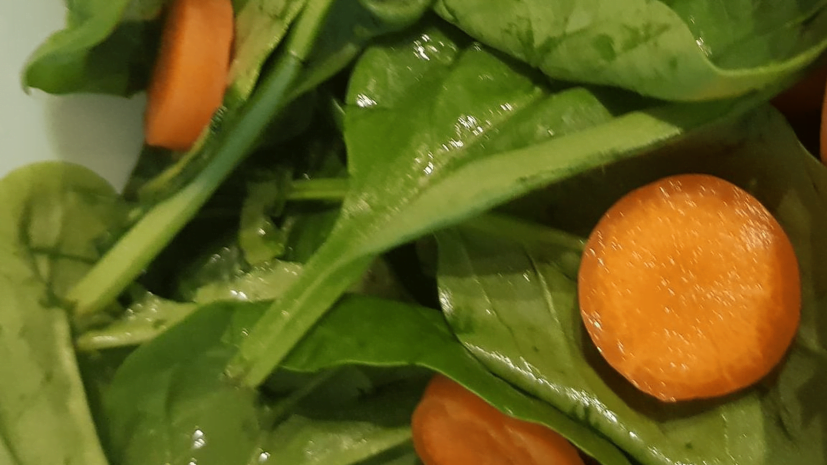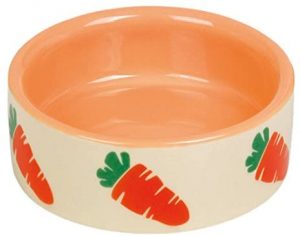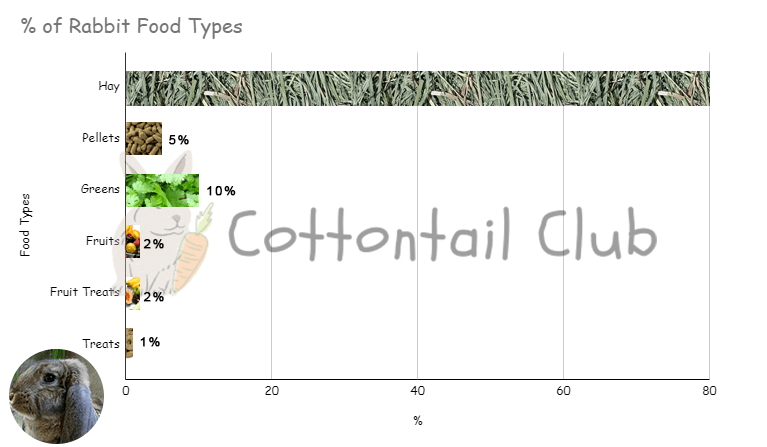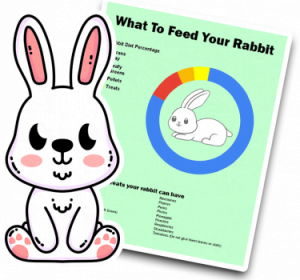
If you’re here, you’re probably looking at getting a Netherland Dwarf Rabbit. These are one of the smallest breeds of Dwarf Rabbit but it is also very common in most homes due to how cute, loyal, active and fun they can be.
Netherland Dwarf Rabbits are one of the more common and cutest rabbit breeds in most locations. This specific breed of Dwarf Rabbit has been bred over a long time to get to its specific size and generalised happy personality.
Like most breeds, Netherland Dwarf Rabbits are very active despite their small stature and size.
You’ll often see them doing binkies and running around constantly, follow this up by a rabbit that loves to cuddle when it’s worn out and you have a recipe for a great relationship.
Like most new rabbits, you’ll find that they are very jumpy and hesitant to their surroundings, as a smaller breed they’re very aware that they’re an easy target to pray.
You can follow these few steps to make sure they settle in and become part of the family quickly:
Netherland Dwarf Rabbits actually come from ‘man-made’ interference, they were specifically bred and engineered in the early 20th century by Dutch Breeders.
Through breeding pure white Polish Rabbits over plenty of generations, the Dutch Breeders achieved the small sized bunnies they had hoped for.
A Netherland Dwarf Rabbits fur is quite short, making it very easy to maintain and only requiring manual grooming once a week.
The fur make look short and rough but it’s extremely soft, especially once it grows out to a medium length.
The standard color for a purebred Netherland Dwarf is white, there have been some mixed breeds for varying colours which include: Fox/Dirty Orange, Chocolate Brown, Satin Blue and Dirty Green.
These have all been verified by the ARBA (American Rabbit Breeders Association) in the US.
In most cases, a domestic rabbit will need to be groomed more often than a wild rabbit, this is due to it being typically warmer inside. However, Netherland Dwarf Rabbits have very short fur which makes them very low-maintenance.
You can brush your rabbit once a week with one of these fantastic hand brushes or by using a small brush like in the video below:

It’s crucial that you brush your rabbit weekly to avoid a build-up of fur in their intestines which can cause long term health issues.
We love the Rosewood brand and the grooming kit they have is also just as good as their other products.
We mostly use the bottom on in the picture to the left, it’s great getting rid of all those rough knots you can’t see and our rabbit Link loves being groomed with it.
You should always leave your rabbit to clean themselves, do not bathe or shower them as this can give your rabbit shock.
Most smaller rabbits as very easy to litter train, most rabbits like having the same spot to go to the loo. We find that after cleaning their toilet, putting a few poops in the litter box so they know it’s theirs.
Our Rabbit Link has a very easy to clean cage because we don’t put straw or hay in the cage, this is down to preference, however, he doesn’t like laying in straw/hay but prefers the sofa!
If you do have straw/hay, you should clean out their cage at least once a week, sometimes more depending on how messy they are.
Netherland Dwarf Rabbits tend to be very good pets health-wise, this is great for any owner who scares easily when reading countless Facebook groups of their rabbits getting ill.
Your Dwarf rabbit is going to encounter the same issues most rabbits face when domesticated: Dental issues, Potential Tumours.

In most cases, a proper diet will file your rabbits’ teeth down to the correct size. The issue comes when your rabbit hits its growth spurt.
During this time, their top and bottom incisors may not align which causes less natural teeth grinding.
If this is left untreated, your rabbits teeth may protrude into its own gums, your rabbit should be seen semi-regularly by your vet.
In terms of tumours, you will want to look into spaying / Neutering your rabbit to lower the risk chance of uterine cancer or testicular cancer.
Due to their size, Netherland Dwarf Rabbits are often very scared, timid and jumpy when they’re unfamiliar with their surroundings.
It can take a rabbit anywhere from a few months to a year to get fully used to its surroundings and new family, so don’t be too upset if they don’t want to snuggle or flop near you.
With these rabbits being so small, you do need to be very gentle. If you’re a heavy-handed individual it may be worth getting a rabbit which is a little hardier.
With a bit of patience, spending time and sitting with your rabbit, you can expect lots of interaction, affection and cuddles.
If your rabbit isn’t cuddling or playing, you’ll find them zooming around looking for the next best thing to rip up, tear and ruin. So definitely do rabbit proof your home.
A Netherland Dwarf Rabbits age depends on its life at home, however this can vary between 8 – 12 years.
You can read more about their life spans here.
This depends on the level of activity they have and their diet, but a Netherlands Dwarf Rabbit should weigh between 1.1 to 2.5 lbs. Most female breeds with weigh more and be slightly larger due to their dewlap.
Ideally, you’ll want your rabbit either indoors or outdoors and not a mixture of both. However, we’ll cover both your indoor and outdoor accomodation.
Rabbits need as much space as possible to exercise, play, run and rest. The minimum size should be at least 20 to 30 inches and left on a ground level.
It’s advised to not have a wire bottom to your cage as this can be detrimental to your rabbits’ health due to Sore Hocks.
If you do have a wire cage, it’s as simple as putting wood down to give them somewhere to stand.
For location, this cage should be kept out of direct sunlight but if possible have an option for some sunlight access. This allows your rabbit to rest in the sun but also have a spot to hide should it get too hot.
We recommend a cage as big as you can allow, if you have a particularly small cage, try getting an external run wall and allow your rabbit to have more space to move around.
Ideally, your rabbit should have at least 3-4 hours outside of their cage for exercise. Whether they choose to use that space is down to them though!
Lots of rabbits have a preference, out of the three rabbits we have owned we’ve never had much success with a bottle.
Generally speaking, bowls are better than bottles for your rabbit as the spout of water can get clogged easily.

During the winter, you may also find that a bottle will freeze, whilst will cause the rabbit to struggle to keep hydrated.
This is a huge problem in comparison to a bowl which has a worst-case scenario of being knocked over.
Your rabbit’s diet should be 70% fresh premium dust-extracted hay, this should ideally be mixed with fresh grass (Assuming they have had their jabs).
If you can, mix your rabbits hay together to create a hybrid of Meadow Hay, Orchard Grass and Timothy Hay. This will provide your rabbit with the nutritional balance it requires.

Some rabbits will refuse to eat certain types of hay, so definitely try testing them individually before offering them to your bunny.
The remaining 25% of your rabbit’s diet should be fresh produce like fruits and vegetables. You can read about which vegetables to give your rabbit.
And lastly, the 5% you have should contain Alfalfa pellets.

By entering your email address you agree to receive emails from Cottontailclub. We'll respect your privacy and you can unsubscribe at any time.